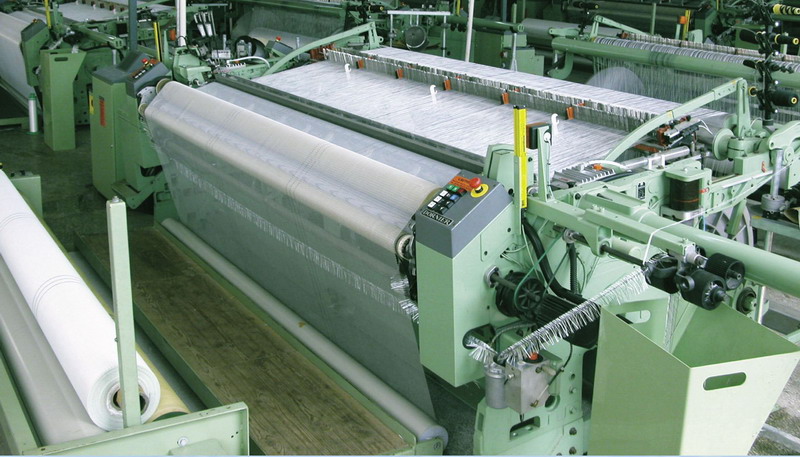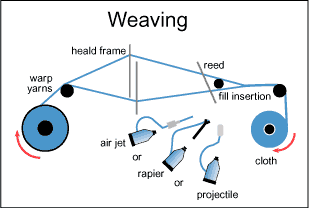In this article we are going to have a brief introduction of how to weave fiberglass cloth. Weaving is a method of textile production in which two distinct sets of yarns or threads are interlaced at right angles to form a fiberglass fabric or cloth structure on the weaving machine or loom.
 The yarns system in the lengthwise direction of the fabric is called the warp. It is supplied to the weaving machine on a loom beam. Warp yarns are often called ends.
The yarns system in the lengthwise direction of the fabric is called the warp. It is supplied to the weaving machine on a loom beam. Warp yarns are often called ends.
The yarns crossing the warp are referred to as weft or filling. On the new loom generation, they are inserted in the fabric by a weft feeder, allowing for a regular unwinding.
The way the warp and filling threads interlace with each other is called the weave. Almost any weave pattern can be woven with glass product. The basic patterns are: plain, basket, twill and their derivatives, unidirectional, as well as leno weave for producing meshes.
 Description of the process how to weave fiberglass cloth
Description of the process how to weave fiberglass cloth
The weaving process is made up of five basic mechanisms:
Mechanism 1: The let-off motion distributes the warp to the loom.
Mechanism 2: A warp shedding mechanism moves the warp yarn up and down according to the weave pattern.
Mechanism 3: A filling insertion system introduces the filling between the openings of the warp yarns (also called shed) carried out by the shedding mechanism.
Filling glass products are basically inserted using modern picking systems:
o Air jet
o Rapier
o Projectiles
o Needle (loom for narrow fabrics)
Mechanism 4: A reed moved by the beat-up motion beats the filling between the warp yarns against the fabric in formation.
Mechanism 5: A fabric take-up regulates the filling density and the fabric is wound onto a tube on the loom or with a separate winding device.

